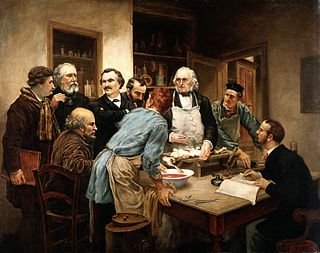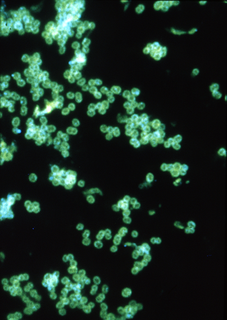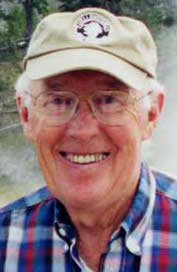
Physiology is the scientific study of the functions and mechanisms which work within a living system.
Primary nutritional groups are groups of organisms, divided in relation to the nutrition mode according to the sources of energy and carbon, needed for living, growth and reproduction. The sources of energy can be light and organic or inorganic compounds; the sources of carbon can be of organic or inorganic origin.

The Methylococcaceae are a family of bacteria that obtain their carbon and energy from methane, called methanotrophs.

The Neisseriaceae are a family of Proteobacteria, within the Neisseriales order. While many organisms in the family are mammalian commensals or part of the normal flora, the genus Neisseria includes two important human pathogens, specifically those responsible for gonorrhea and many cases of meningitis. As a group, the Neisseriaceae are strictly aerobic and Gram-negative, occur mainly in pairs (diplococci), and typically do not have flagella.

Desulfovibrio is a genus of Gram-negative sulfate-reducing bacteria. Desulfovibrio species are commonly found in aquatic environments with high levels of organic material, as well as in water-logged soils, and form major community members of extreme oligotrophic habitats such as deep granitic fractured rock aquifers.
2,3-Butanediol fermentation is anaerobic fermentation of glucose with 2,3-butanediol as one of the end products. The overall stoichiometry of the reaction is

Medical microbiology , the large subset of microbiology that is applied to medicine, is a branch of medical science concerned with the prevention, diagnosis and treatment of infectious diseases. In addition, this field of science studies various clinical applications of microbes for the improvement of health. There are four kinds of microorganisms that cause infectious disease: bacteria, fungi, parasites and viruses, and one type of infectious protein called prion.
Methylomonas is a genus of bacteria that obtain their carbon and energy from methane, a metabolic process called methanotrophy.

Methylomonas methanica is a Gram-negative bacterium that obtains its carbon and energy from methane, a metabolic process called methanotrophy. It is found in lakes, ponds, freshwater sediment and marshy ground. They are motile, the cells are rod-shaped.
Chromatium is a genus of photoautotrophic Gram-negative bacteria which are found in water. The cells are straight rod-shaped or slightly curved. They belong to the purple sulfur bacteria and oxidize sulfide to produce sulfur which is deposited in intracellular granules of the cytoplasm.
Prosthecate bacteria are a non-phylogenetically related group of Gram-negative bacteria that possess appendages, termed prosthecae. These cellular appendages are neither pili nor flagella, as they are extensions of the cellular membrane and contain cytosol. One notable group of prosthecates is the genus Caulobacter.

Dipicolinic acid is a chemical compound which composes 5% to 15% of the dry weight of bacterial spores. It is implicated as responsible for the heat resistance of the endospore.
Borrelia recurrentis is a species of Borrelia, a spirochaete bacterium associated with relapsing fever. B. recurrentis is usually transmitted from person to person by the human body louse. Since the 1800s, the body louse has been known as its only known vector.
A macrocyst is an aggregate of cells of Dictyostelids formed during sexual reproduction enclosed in a cellulose wall.

Thomas Dale Brock is an American microbiologist known for his discovery of hyperthermophiles living in hot springs at Yellowstone National Park. In the late 1960s, Brock discovered high-temperature bacteria living in the Great Fountain region of Yellowstone, and with his colleague Hudson Freeze, they isolated a sample they named Thermus aquaticus. "Life at High Temperatures", a 1967 article summarizing his research, was published in the journal Science and led to the study of extremophiles, organisms that live in extreme environments. By 1976, T. aquaticus was found useful for artificially amplifying DNA segments. Brock's discoveries led to great progress in biology, contributed to new developments in medicine and agriculture, and helped create the new field of biotechnology.

Microbiology is the study of microorganisms, those being unicellular, multicellular, or acellular. Microbiology encompasses numerous sub-disciplines including virology, parasitology, mycology and bacteriology.
Kutzneria is a genus of bacteria in Phylum Actinobacteria. Three species of Kutzneria have been described as of 2001. This genus was named after Hans-Jürgen Kutzner, a German microbiologist.
A microbial consortium is two or more microbial groups living symbiotically. Consortiums can be endosymbiotic or ectosymbiotic.
Cellulomonas is a genus of Gram-positive rod-shaped bacteria. One of their main distinguishing features is their ability to degrade cellulose, using enzymes such as endoglucanase and exoglucanase. They are members of the actinobacteria.
Germ theory denialism is the belief that germs do not cause infectious disease, and that the germ theory of disease is wrong. It usually involves arguing that Louis Pasteur's model of infectious disease was wrong, and that Antoine Béchamp's was right. In fact, its origins are rooted in Béchamp's empirically disproved theory of pleomorphism. Another obsolete variation is known as terrain theory and postulates that diseased tissue attracts germs rather than being caused by it.











